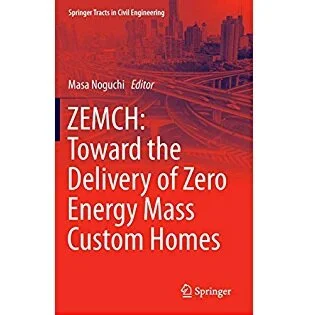Open Building related literature below
Open Building legacy
The ideas of the Founding Partners in OpenBuilding.co are built on the legacy of Professor N. John Habraken, who in the 60s promoted Open Building as a radical shift in decision-making for mass customized housing and a new way to harness the power of industrial production.
N. John Habraken’s legacy of adaptable architecture and co-creation is in high demand for the current generation of Dutch architects. Many examples of Open Buildings can be seen in Amsterdam Noord and other developing areas of The Netherlands. With his views on Open Building, a concept he describes in his book ‘De Dragers en de Mensen’ (1961) – in English ‘The Supports and the People’, Habraken was decades ahead of the profession. As it appears, in recent projects the Open Building principles have proven to be valuable tools in the transition towards a circular building industry and sustainable, resilient cities.
Habraken advocates a vital architecture that gives shape to every day life and allows for change. He makes a clear distinction between the support and the infill and emphasizes that this distinction is not only technical in nature, but more importantly focused on the ability of personal influence. Supports are part of the public domain and are permanent, while the infill belongs to the individual and is changeable. Participation and freedom of choice of the user is the key objective.
Habraken is the progenitor of a new way of thinking in architecture where the users and inhabitants may make design decisions and where designing is a process with multiple participants including different kinds of professionals. Those who subscribe to the Open Building approach seek to formulate dynamic theories about the built environment and to develop methods of designing and building construction that are compatible with it.
In his publication ‘De Dragers en de Mensen’ (1961), Habraken first introduced the concept of Open Building. Here he emphasizes the meaning of the support and the infill within the industrial process. Later in ‘The Structure of the Ordinary’ (1998) and ‘Palladio’s Children’ (2005) he expands the concept by shifting the focus to how to fit the support in the everyday built environment, prioritising the user over the structure and design.
According to Habraken, autonomous, monumental buildings should make way for interwoven individual design units. Big projects can only exist as a structure of interwoven pieces where the user can shape and design their own settlement.
International Open Building Council
Inspired by Habraken's ideas and the pioneering work of the SAR in the 1960's-70's, TU Delft, under the direction of Professor Age van Randen, launched the OBOM research group in the 1980's to work out the practical problems of implementing the Open Building approach. This is when the term Open Building was coined. In the mid 1990's, the CIB W104 Open Building Implementation network was formed. It now has more than 300 members around the world. In 2017, the Council on Open Building was launched in the United States.

N. John Habraken
“Supports are part of the public domain and are permanent, while the infill belongs to the individual and is changeable. Public participation and freedom of choice of the user is the key objective.”
Open Building - N. John Habraken (1961)


























